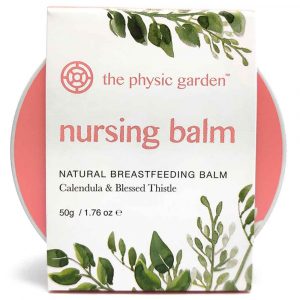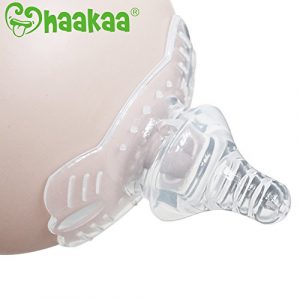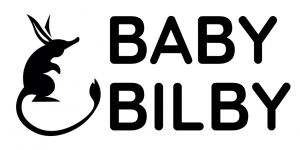Your 2 Week Old Baby
More feeding than you thought possble is fuelling your 2 week old baby as they hit their first growth spurt, inside and out

Eat, sleep, poop, repeat
It’s now the second week with your newborn, and while each day holds new lessons, the main thought is often “How can they sleep so much!”. The only thing that seems to match their level of sleep is how much they’re feeding (and subsequently, pooping). Your 2 week old baby will be sleeping up to 18 hours a day, but you’ll find they’re awake for longer periods of time. While they’re seeming to want a feed constantly, there’s good reason for that. It’s your baby’s first growth spurt!
Growing fast
Your 2 week old baby is hitting it’s first growth spurt (with many more to come). Over the next few weeks, there’s going to be some big changes, including
- Weight: In the first week of their life, you’ll find bubba will be lighter than when they’re first born (don’t worry, it’s perfectly normal). In the second week, they should have regained that original birth weight, or even surpassed it. For those with issues feeding or breastfeeding, this may take a bit longer.
- Height: While your little miracle won’t be standing yet, they’re certainly growing upwards. From this week until the first month, they’ll grow up to 5 cms!
- Internal development: It’s not just the outside where your 2 week old baby is growing, their brain is doing amazing things. As they’re awake more and interacting with their world (mainly you), they’re become more attuned to external stimulus and learning how to react. Their brain is also growing in size, which is part of the role of the soft spots on their head (known as fontanelles).
- Voice: Your 2 week old baby will start to be more expressive with crying, mainly when they’re hungry, tired or need changing. But this is important, as they’re learning how to communicate their needs and feelings. They’ll also be startling and reacting to loud noises in their environment.
Food, glorious food!
When your 2 week old baby hits their growth spurt, there’s one thing alone that fuels it, food. Every 1-3 hours your baby will want to feed, and this will only become more regular throughout the growth spurt. While some mums find baby is happy to feed on a consistent timetable, others can struggle to find any pattern. Learning to read the signs of when your baby is hungry can make life a lot easier. Here’s some of your baby’s ways of telling you it’s time for a feed;
- Moving their arms and legs around in different directions, or wriggling/fidgeting.
- Sucking on their lips or tongue, or putting their fist or fingers into their mouth.
- Moving their head from side to side, or turning their head towards your breast while you’re holding them.
- Making faces, cooing, whimpering, sighing or other sounds.
These signs won’t necessarily make feeding more consistent, but will help you to understand your baby’s language and strengthen your bond.
It’s not at all uncommon for women to have trouble breastfeeding, whether it’s a lack of milk production, issues with pain or mastitis, or your baby is not able to latch or suck properly. If you’re having trouble with this at all, speak to your midwife, GP or contact the helpful staff at Australian breastfeeding Association.
Bathtime
In the first 10-14 days of your newborn’s life, their umbilical cord should fall off, which means you can start one of your biggest milestones, baby’s first bath! This can be a bit intimidating at first, and your baby may not respond the way you’d like. Don’t worry, it’s not unusual for the first bath to be a bit tricky, and you’ll have plenty of other baths with them to get into the routine and make it a fun time. When it comes time for the first bath, here’s a few tips.
- Environment: Your baby may start to cry during this time, often it’s just the cold air and new environment. Speaking to them like you normally would can help them to feel calmer here, but sometimes it just takes time for them to adjust.
- Sensitive parts: When cleaning your baby, whether it’s bath time or after a change, take care with their genitals. For girls, wipe front to back gently. For boys, don’t force back the foreskin if they’re uncircumcised, it will naturally recede over the next few years.
- Routine: Your 2 week old baby won’t yet be familiar with bath-time, so setting up some kind of routine around this can help a lot. This can include playing a certain song before or during, making sure there’s a comfortable light and smell around, and that before and after you’re maintaining skin on skin contact with bubba.
- Nerves: This isn’t just baby’s first time with all this, it’s yours as well. With a slippery baby, new environment and any anxieties from you, it’s understandable that it may not be the most fun first time around. Take a breath and remember that it may be the first time, but it’s certainly not the only time, and use the opportunity to get to know each other better in a new way.
A typical two week old’s day
- Your two week old baby will continue to sleep up to 18 hours a day, but you’ll find they’re awake for longer periods of time.
- Lots and lots of feeding. Every 1-3 hours they’ll be wanting mum’s milk.
- Each baby will have different pooping routines, with some having a small one after each feed, others only once a day. It won’t be thick and tarry anymore, but more of a runny yellow texture.
- Your baby is learning to respond to the world, and even if it might not look like it, they’re watching and listening to you very closely as their brain is developing.
- They’ll be sucking their thumb a lot, which is good news! This helps them develop strength in their cheeks to breastfeed while also helping them to self-soothe.
Tips For You This Week
Take care of yourself
If you had a vaginal birth, your perineum and surrounding area is still likely to be very tender and sore. Use a donut cushion when sitting and speak to your GP about pain relief if it’s bad. For those who had a C-section, bending forward will be hurting too, so make sure you take rest where you can get it, and ask your partner, family or friend to take care of the more physical chores.
Keep up that dairy
As your baby is hitting their first growth spurt, logging their poos, weight and behaviour is helpful not only in making sense of it all, but can help you to connect more with your child, especially if you’re struggling with post-natal depression or anxiety.
Your poos matter too
Going to the bathroom after birth can be painful and downright scary. Keep your fluids up over the day and increase your fiber intake for an easier bathroom experience.
Nip it in the bud
Constant breastfeeding can be painful, especially if there are issues with latching or feeding. Using nipple shields, nipple cream and breast pumps can help to relieve pain and discomfort, and make feeding time much easier.
Recommended Products

Nursing Balm - The Physic Garden
For some Mums, breastfeeding can be a challenge; nipples can becomes sore, cracked & inflamed. That’s where The Physic Garden’s Nursing Balm can help to ease the discomfort and transition for newly breastfeeding Mums.
Nursing Balm combines natural oils and herbs, Calendula & Blessed Thistle. Traditionally used by breastfeeding mums to moisturise and soothe dry, cracked nipples, it can also be used by mums-to-be to increase elasticity & moisturise to prepare for breastfeeding. Completely safe for Mum and Baby, with gentle, all natural ingredients.

Haakaa Breastfeeding nipple shield
The Haakaa Breastfeeding Nipple Shield is a world-first design made of 100% soft silicone, with an extended teat that puts space between your nipple and your baby’s mouth.
If your little one bites down, pulls away, or if you have inverted or cracked nipples, you will still be able to breastfeed with ease and comfort. Our Nipple Shields suction onto your breast, giving you a hands-free breastfeeding experience.

Donut Cushions
Whether it was a traumatic birth or a standard vaginal delivery, pain and tenderness in the perineum and surrounding areas, as well as haemorrhoids, can make the simple cat of sitting down a painful one. Using a donut cushion take pressure away from the sensitive areas and allows you to sit in relative comfort.
See what else you can expect in our week to week parenting guide



